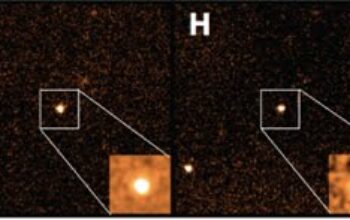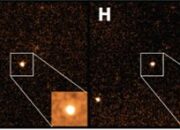In the nascent twilight of the digital age, the burgeoning field of quantum computing emerged as a tantalizing enigma, inviting inquisitive minds to explore its depths. The development of quantum algorithms has been akin to the gradual unfolding of a uniquely intricate tapestry, woven with the threads of theoretical physics, computer science, and mathematics. This narrative elucidates the evolution of quantum algorithms, traversing through its historical milestones, foundational theories, and the visionary innovators who dared to dream beyond classical confines.
Initially, the dawn of quantum theory in the early 20th century ignited a revolutionary dialogue. The principles elucidated by pioneers such as Max Planck and Albert Einstein laid the groundwork for the intriguing paradoxes of quantum mechanics—a realm where particles can exist in superposition, and entanglement enables instantaneous connections over vast distances. This initially abstract framework posed questions rather than provided answers, establishing an intellectual crucible that would eventually fuel the quest for quantum algorithms.
Fast forward to the late 20th century, and the convergence of theory and application began to materialize. In 1981, Richard Feynman famously posited that quantum systems could not be efficiently simulated by classical computers. This revelation prompted researchers to speculate: could quantum algorithms revolutionize problem-solving? The spark of inquiry ignited a fervor within the scientific community, propelling the first conceptualization of quantum algorithms as promising avenues for computational complexity.
The dawn of the 1990s heralded a watershed moment. In 1994, Peter Shor introduced a groundbreaking quantum algorithm for integer factorization, demonstrating that quantum computing could perform specific tasks exponentially faster than classical algorithms. Shor’s algorithm functioned like a beacon, illuminating the potential of quantum processing in addressing problems deemed intractable. The implications were profound; it threatened the foundation of traditional cryptography, unveiling vulnerabilities in widely utilized encryption schemes.
Simultaneously, Lov Grover unveiled his quantum search algorithm, capable of searching unsorted databases in quadratic time, an improvement that represented another quantum leap over classical approaches. Grover’s algorithm essentially acted as a quantum searchlight, dissecting the vastness of data much more efficiently than its classical counterparts. These pioneering algorithms were not merely academic curiosities; they were a clarion call for a transformation across sectors, from cryptography to optimization problems.
As the realm of quantum algorithms expanded, it bore intricate branches, each catering to specific computational problems. Quantum Fourier Transform, Quantum Walks, and Variational Quantum Eigensolvers emerged as formidable contenders in this computational landscape. Each algorithm unfolded like chapters in a scientific tome, rich with complexity and potential. The allure lay in their ability to harness quantum properties, enabling computations that seemed almost sorcerous from a classical perspective.
The development of quantum algorithms was not solely the work of individual luminaries; it was propelled by an intertwining of collaborative research efforts and burgeoning academic institutions. Organizations sprang forth, such as the IBM Quantum Research Initiative and Google’s Quantum AI lab, galvanizing resources and intellect to expedite advancements. Like scholars in an ancient library – each contribution was an enhancement of collective knowledge, fostering an ecosystem ripe for breakthroughs.
However, as the intrigue of quantum algorithms flourished, so too did the realizations of their inherent challenges. The complexities of error correction, coherent states, and qubit scalability introduced formidable barriers, akin to navigating through a tempestuous sea. Researchers confronted the Ergodic dissipations of noise and decoherence within quantum systems, necessitating innovations that honored the delicate quantum states. The triumvirate challenge of fidelity, coherence time, and operational overhead loomed large, necessitating a reevaluation of both algorithm design and hardware capabilities.
Despite these perplexities, promising strides have been made in hybrid quantum-classical approaches, harnessing the strengths of both paradigms. Algorithms now often incorporate classical preprocessing steps to optimize performances before launching into the quantum realm, illustrating an adaptable philosophy reminiscent of natural selection in the biological world. These developments echo the notion that evolution, in both nature and technology, often favors amalgamation over isolation.
As we explore the unique appeal of quantum algorithms, it becomes evident that they represent more than merely advanced computations; they embody a philosophical shift in our understanding of information and reality itself. The potential to solve NP-hard problems with polynomial efficiency can be likened to discovering a hidden key to a complex lock, unlocking doors to realms of knowledge previously deemed inaccessible. The implications span across disciplines, poised to reshape fields such as artificial intelligence, materials science, and beyond.
Quantum algorithms thus illustrate a synthesis of creativity and rigorous scientific inquiry, manifesting the metaphor of a distant horizon that, while continually receding, invites intrepid explorers to forge ahead. The evolution of quantum algorithms reflects a tapestry of intertwining strands—each algorithm a note in a symphonic composition, resonating with the promise of computational capabilities that may one day transform the very framework of our technological landscape.
The journey of quantum algorithm development remains in its nascent stages, the future enigmatic and exhilarating. It invites a sense of wonder, a glimpse into a realm where the peculiarities of quantum mechanics may one day coalesce into algorithms that perform feats of unimaginable elegance and efficiency—truly, the quantum odyssey continues.










